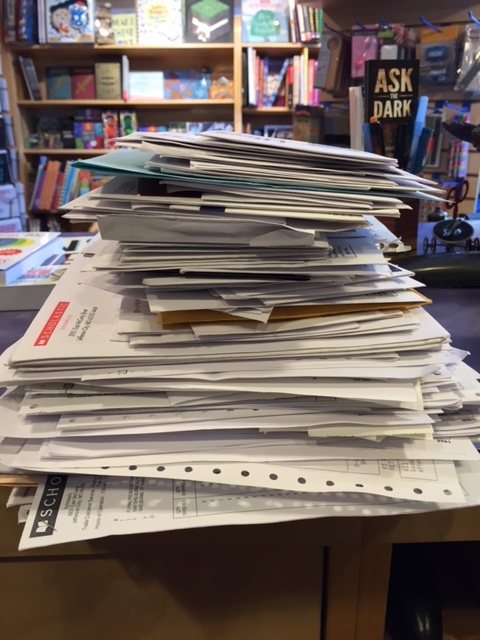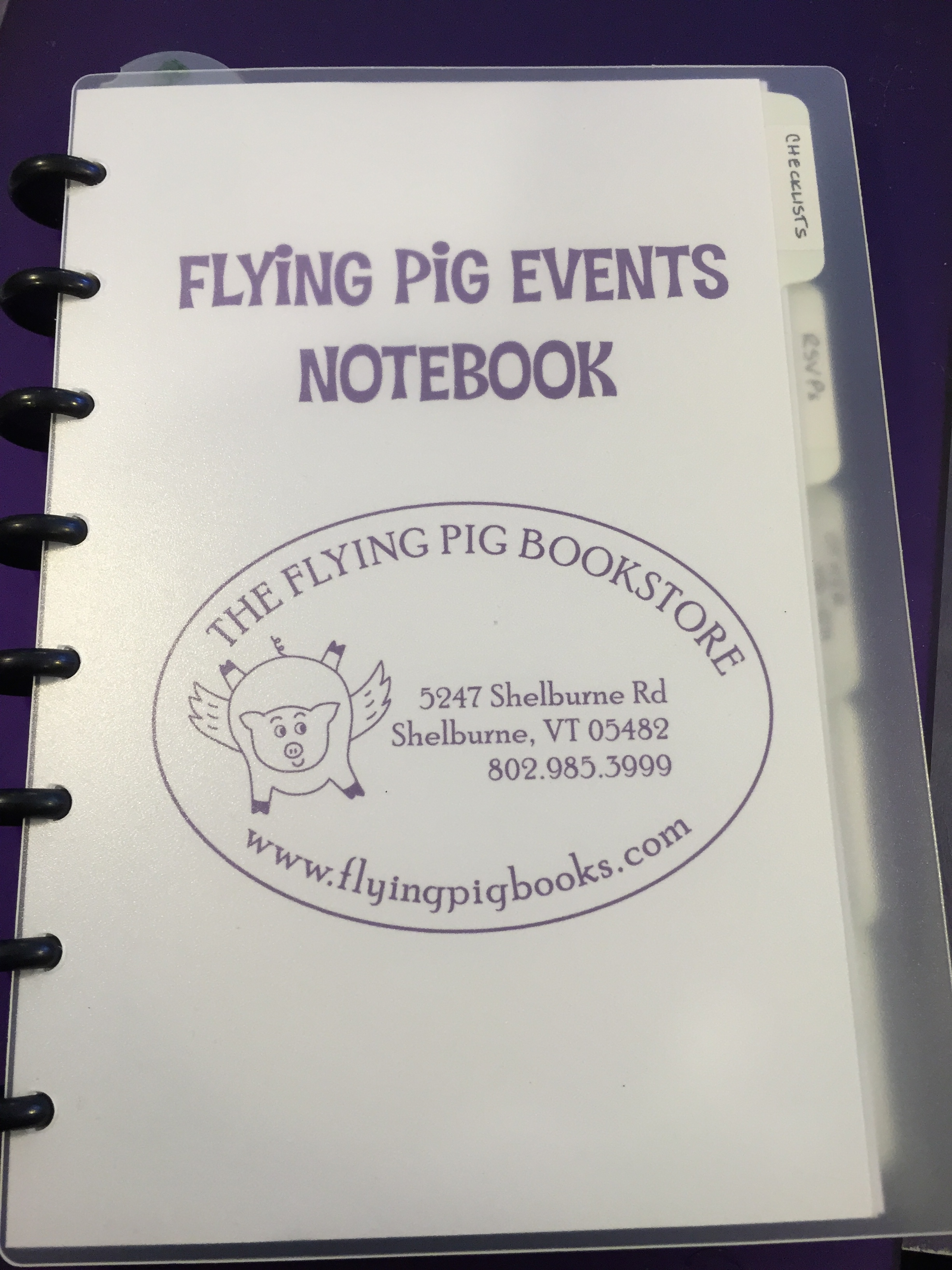 Independent bookselling is a strange and wonderful avocation. Although we have many colleagues around the country, each of us runs our stores differently. We have broadly similar goals – bring beautiful, important, funny, inspiring, informative books to as many readers as possible – and yet wildly idiosyncratic ways of getting there. When I post behind-the-scenes glimpses of the Flying Pig infrastructure, I do so partly to give people on the other side of the desk a peek inside, and partly to share my personal strategies, tips, and resources with my colleagues, wanting to compare notes.
Independent bookselling is a strange and wonderful avocation. Although we have many colleagues around the country, each of us runs our stores differently. We have broadly similar goals – bring beautiful, important, funny, inspiring, informative books to as many readers as possible – and yet wildly idiosyncratic ways of getting there. When I post behind-the-scenes glimpses of the Flying Pig infrastructure, I do so partly to give people on the other side of the desk a peek inside, and partly to share my personal strategies, tips, and resources with my colleagues, wanting to compare notes.
Roughly half my life has been spent trying to find perfect organizational tools. For example, because I am a reluctant planner, I have to have the exact right portable paper calendar — for me, a monthly view, with large, clean, uncluttered squares to write in – without which, I cannot keep track of my schedule. It’s a genetic thing; my sister and I inherited it from our Dad – both the aversion to setting dates in stone and the desire for gorgeous organization. From old-fashioned stationery stores to brand-new iPhone apps, the three of us have searched high and low for that elusive perfect tool that will transform us into the highest versions of our fully organized selves. We haven’t found it, my sister and I, but we are ever hopeful.
When it comes to sharing important information with a team of people, those tools are even more important. Bookstore events require so much advance planning that we are always fine-tuning (and sometimes overhauling) our systems to make sure nothing falls through the cracks. Since pre-fab forms and apps don’t exist, every bookstore creates its own ways of doing things. At our store over the years, we’ve used events to-do list spreadsheets and Google Docs with many incarnations – adding and subtracting columns, trying to get everyone to use the same tool the same way – with varying levels of success.
But now – and this has been a REALLY long-winded of getting to the single celebratory point of my post – I think I may have finally invented a pretty solid events template. It’s a notebook that lives at the store where everyone can access it at any time. At the top of the page goes the event name, date and time, and the rest is a checklist of just about everything we need to do for that event. I showed this template to an organized friend of mine who does consulting work for businesses, and she said, “I have a suggestion: instead of having people just check off the boxes, ask them to initial them, so if you have any questions later, it will be easy to know which staff member to ask about that item.” Brilliant!!
Here it is:
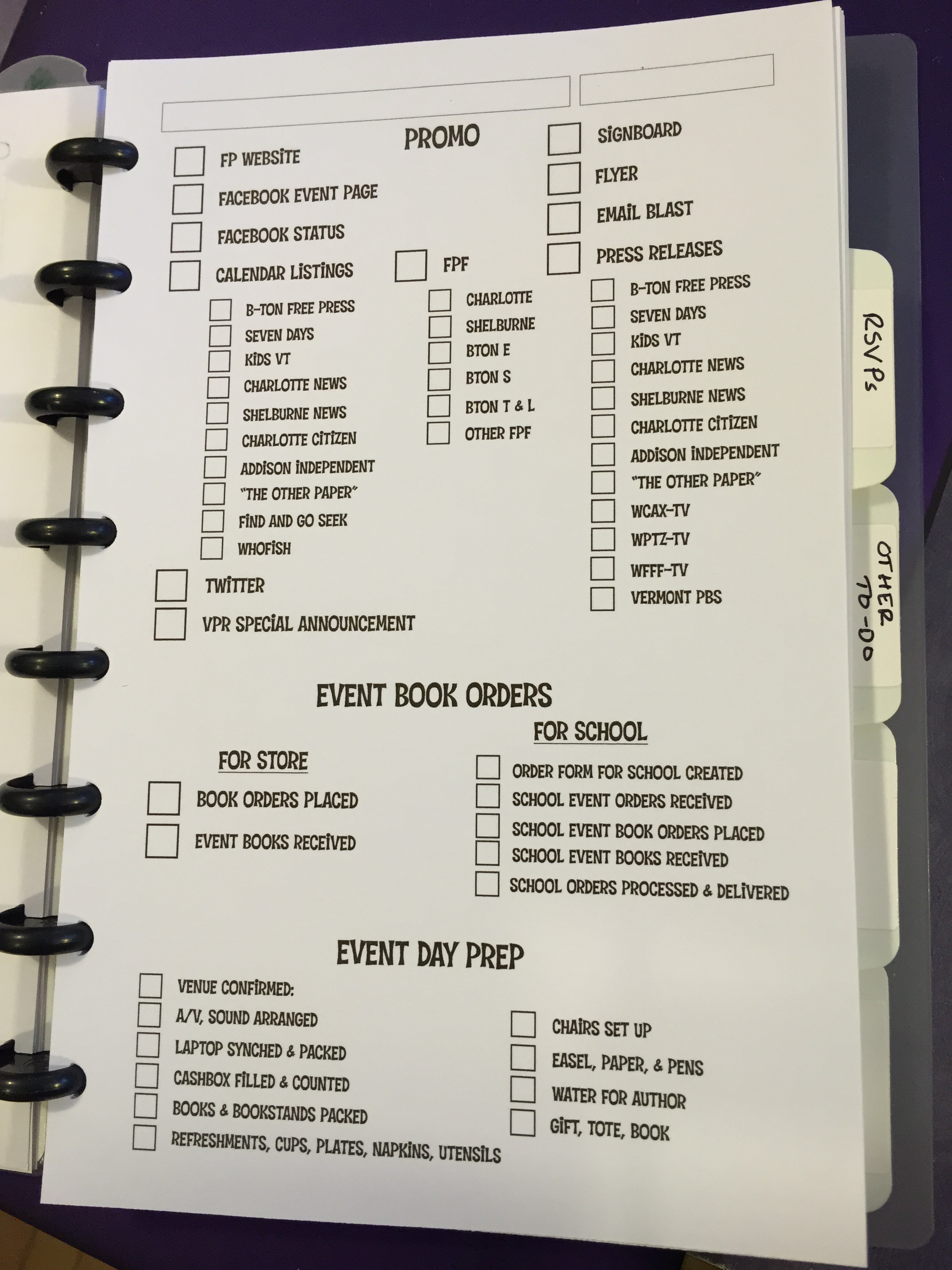
I tell you, it takes a village to organize a bookstore, and an entire bookstore to organize a good event. I’ve already revised this thing four times since its creation. We’ll see how many more tweaks it gets before we decide that, for now, it’s the perfect organizational tool.
Monthly Archives: March 2015
If You Can Find It, You Get a Free Book
Josie Leavitt - March 27, 2015
Sometimes there are days when no matter how hard I try, I just cannot find a book that is supposed to be in the store. First the search is solitary: I just know the book is somewhere in the store, then after many minutes of searching, I ask a fellow bookseller for help. Then the two of us brainstorm just where the book could have gone. It gets to the point that one of is searching with the phone in a pocket so we can roam more freely and still get work done.
Such was the scene on Tuesday. Here’s the background: a customer ordered a book, the phone  number we had was out of order so we set the book aside on the counter with a note to research the number. The research led nowhere, so we kept the book on the side counter. Books do not make it on the special order hold case until we’ve contacted the customer in some way. Usually, this system works quite well. We all last saw the missing book on Thursday of last week. Then it was gone. We hadn’t sold it to anyone and we only had the one copy in the store so it was still very likely it was in the back of the store by the register or the office. The customer who ordered the book called Tuesday asking for it. We took her number, corrected her customer file and told her, quite honestly that the book was in the store but we couldn’t find it.
number we had was out of order so we set the book aside on the counter with a note to research the number. The research led nowhere, so we kept the book on the side counter. Books do not make it on the special order hold case until we’ve contacted the customer in some way. Usually, this system works quite well. We all last saw the missing book on Thursday of last week. Then it was gone. We hadn’t sold it to anyone and we only had the one copy in the store so it was still very likely it was in the back of the store by the register or the office. The customer who ordered the book called Tuesday asking for it. We took her number, corrected her customer file and told her, quite honestly that the book was in the store but we couldn’t find it.
The call from the customer mobilized Laura first to start searching. When she couldn’t find it, I got obsessed. We almost always find books after searching this hard for them. I started enlisting customers’ help. I told the two groups we had in the store that if they found the book we would give them a book of the same value, free. This one mom had her kids looking. It was actually funny how many people in the store were just standing back from the shelves scanning the books. And here’s the crazy thing: not one person found the book. No one could find it. We even pulled the counter from the back wall to see if it had fallen behind it and the wall. It hadn’t. It’s been three days and we still can’t find the book. We checked every single special order being held, in case it was accidentally tucked in the wrong place.
It got so bad I asked every customer who came in the rest of that day to look for this book and explained the free book offer. Customers were very helpful and not one of them found it either, but they did have new perspective into one of the most frustrating parts of my job: looking for books. So, here’s what I know. The replacement copy has come in but we still can’t find that book. I have not given up, as I know on some level, that book is still in the store, and honestly, I’m not going to completely relax until it’s found.
An Interview with Spring
Kenny Brechner - March 26, 2015

Those of you who thought Spring would never come this year have been proven wrong. Here she is at last!
Kenny: I’m so glad to see you, Spring. It’s been a long winter. Thanks for coming.
Spring: My pleasure. It’s nice to be so appreciated; I owe winter one. What can I do for you Kenny?
Kenny: Two things really. I want to get your book picks for the Spring season, but first I’m hoping you can clear up some rumors I’ve been hearing about the historical background of the Easter Bunny.
Spring: I’ll do my best.
Kenny: Thanks. One story I’ve been hearing is that the Easter Bunny has an identical twin who, a la the Man in the Iron Mask, has been kept locked away from public view in a dank prison cell with his head encased in an egg-shaped mask. The rumor is that he led a failed uprising against his brother and that the dispute between the twins arose because the bunny we know as the Easter Bunny preferred distributing eggs, while his identical twin was in favor of distributing books.

Spring: Hmmn. On second thought, perhaps it would be best to leave the past alone. There’s no reason to disinter old bones.
Kenny: Are you saying that it did really happen?
Spring: There is some truth in that story, yes, but many aspects relating to it are questionable or inaccurate. For example it is true that the book-loving bunny led an uprising against his brother, but the pernicious stories of all his followers having been impaled on sharpened carrots after the rising are purely apocryphal.
One certainty is that the Book Bunny spent many years imprisoned and forgotten. The real question involves the report that one afternoon, when the Egg Bunny came to gloat over his brother, as he occasionally did, the Book Bunny turned the table on him and escaped, leaving his egg-favoring brother a prisoner in his place. However, I am not the best person to affirm the truth of that.

Kenny: Who is then?
The Book Bunny: I would be happy to clear things up for you.
Kenny: Aaah! Oh! I didn’t see you there.
The Book Bunny: Yes, well, centuries of tradecraft.
Kenny: I see! I’ll take you up on your offer. What is the truth?
The Book Bunny: First of all, there are five official Easter Bunnies at any given time. Individual Easter Bunnies tend to have specialties. Mine is books.
Kenny: Aha! So The Country Bunny and the Little Gold Shoes is a true story. There are five bunnies. That is news indeed!
The Book Bunny: Yes, apart from being the best Easter book of all time, The Country Bunny and the Little Gold Shoes is also a work of non-fiction and good for Common Core. Now these other tales you have been hearing about all refer to old disputes that occasionally have arisen between bunnies with different specialties over the centuries. Personally I don’t like to reflect on all the time I spent in that dank cell.
Kenny: I see. While I have you here is there any new bunny book you think is a real standout this year.
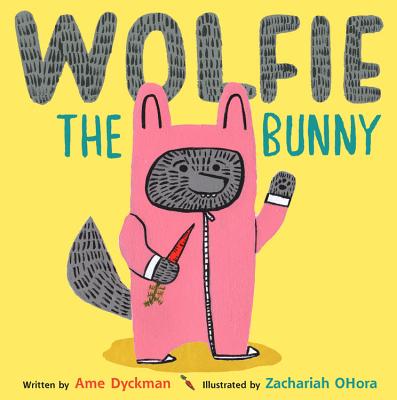
The Book Bunny: Oh, certainly. Wolfie the Bunny is just delightful. It is filled with humor, charming characters, and good bunny role models. I highly recommend it.
Kenny: Fabulous. What about the best new books coming out this Spring in general?
The Book Bunny: I only read kids’ books – you’ll have to get some adult picks from Spring. For picture books my two big favorites are Miss Hazeltine’s Home for Shy and Fearful Cats, by Alicia Potter and illustrated by Birgitta Sif, and Stick and Stone, by Beth Ferry and illustrated by Tom Lichtenheld. Also there is a terrific board book original coming out, Yellow Copter, by Kersten Hamilton and illustrated by Valeria Petrone. It’s a sequel to Red Truck.
Kenny: I love Red Truck!
The Book Bunny: Exactly! Moving up from there, and considering that Spring is a kind of renewal after all, there are two fabulous sequels to be aware of, Dory Fantasmagory and the Real True Friend, by Abby Hanlon and Half Wild, by Sally Green. For Young Adults, An Ember in the Ashes, by Sabaa Tahir and Ask the Dark, by Henry Turner are two books that no one should miss.
Spring: What about The Penderwicks in Spring?!
The Book Bunny: I was leaving that for you.
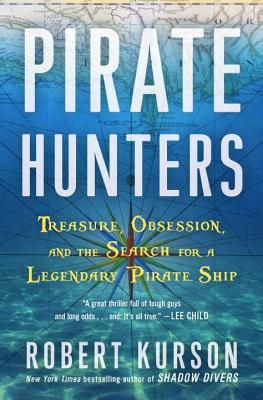
Spring: Oh, right, good one. Okay my picks for adult books coming out this Spring are Church of Marvels, by Leslie Parry for fiction, for its well developed characters and intriguing backdrop. Fun! For non-fiction it is all about Pirate Hunters, by Robert Kurson.
Kenny: Yes I’m very excited to see a new book by Kurson. I understand that it features some of the same characters as his sensational Shadow Divers. Is it up to that standard?
Spring: Yes, it is another true tale set in the world of wreck diving, and John Chatterton figures in it prominently. Hmm. It’s a terrific read but perhaps a half notch below Shadow Divers. Speaking of piracy, another book you’ll want to be mindful of this Spring is Mathew Pearl’s Last Bookaneer.
Kenny: Great choices! Thank you both for your time and your expertise.I know people will be so pleased that you have arrived at last!
Spring: My pleasure! I know I should have gotten here earlier but I hope it will be as the old saying runs,”Need brooks no delay, but late is better than never.”
The Book Bunny This year Spring I think that “old saw (will) be proved truer than ever before men spoke with mouth!”
Getting on the Family Calendar
Josie Leavitt - March 24, 2015
All bookstores struggle with getting people to attend events. Whether you’re a large store in a big city or a small store in a rural village, there is always pressure and anxiety about who will come to author readings. I hate poorly attended events, not for me, but for the author. I want all events to be great experiences for the author who might have come a distance to share him or herself with our community. It is impossible to predict how many people will not only come to an event, but sign up to coming beforehand.
This is where the family calendar is king. If an event makes it on the family calendar, then it’s very  likely folks will actually come and not just think about going. The family calendar runs the lives of everyone I know. It has to. Families are so busy these days with children’s sports, play dates, tutoring sessions, etc., that there’s very little wiggle room for spontaneous additions. This is why getting a bookstore event inked in the calendar in advance can mean greater attendance for store events – making it to the calendar means someone in the family has committed to going to it.
likely folks will actually come and not just think about going. The family calendar runs the lives of everyone I know. It has to. Families are so busy these days with children’s sports, play dates, tutoring sessions, etc., that there’s very little wiggle room for spontaneous additions. This is why getting a bookstore event inked in the calendar in advance can mean greater attendance for store events – making it to the calendar means someone in the family has committed to going to it.
In less than two hours last night we had upwards of 12 people RSVP for an event with parenting expert Vicki Hoefle on April 6th. (And three more people have signed up since I began writing this post.) We did not run an ad, nor did we do a radio spot. In fact, we spent no money at all. All we did was write up a modified press release for the event and post it on our local Front Porch Forum. This is the description of what FPF is from their website: “Front Porch Forum is a free community-building service. Your neighborhood’s forum is only open to the people who live there. It’s all about helping neighbors connect.” Its simplicity is genius. Its reach is vast and its cost is delightful.
The FPF goes to everyone nightly. It is often the only email people read because it is so local and it’s about your town and people you know. It’s not just about commerce or announcing tag sales, but it can help solve mysteries. For instance, everyone in part of my town heard a massive BOOM last weekend and many folks posted to FPF about it wondering what it was. Was it a train derailment? A frost quake? Ice shifts? Earthquake? Turns out someone had a party and set off a cannon. Yes, a cannon. Without the back and forth conversation that can happen on the forum, we’d all still be wondering. In the meantime we all learned a ton about big noises that can happen in winter.
Posting is simple: text only, no embedded images or links. We emailed our event listing in the morning and it was added to yesterday’s forum. Our announcement was towards the end of a rather long forum with lots of posts, but everyone read it through, as evidenced by how many people RSVPed. That kind of response is so gratifying. And the beauty of this is while you can only post to the forum in your neighborhood, other people can post your text to theirs for you, so you can cover the entire county for free if you have enough friends.
Knowing now how many folks signed up in one night is a great indicator of how successful the event will be. We will run the post three more times until April 6th and hope to fill the store and use the money we saved by not paying for advertising on bringing in more books.
Pencil Perfection
Josie Leavitt - March 23, 2015
Elizabeth and I have had the bookstore for almost 19 years and we generally agree on most things we bring into the store. We’ve even said, quietly at the end of a long day when we’re dreaming a bit on what else we can do, “Wouldn’t art supplies be great?” Secretly, we both have a passion for art supplies. Why I’m not exactly sure. I can’t draw at all, but there’s something about a sketch book and nice pencil that delights me. Elizabeth is much the same, and she can draw. Combine our love of all things arty, paper, pencils, crayons – heck, even good coloring books – and a brutally long winter where warmth never seems to take hold on sunny days, and you’ve created the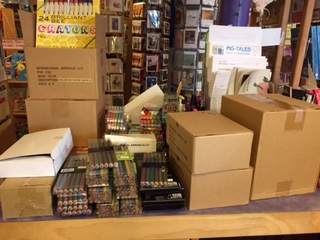 perfect storm for the great arts supply arrival.
perfect storm for the great arts supply arrival.
As the sideline buyer, Elizabeth is responsible for bringing in some of our bestselling items: all of our cards, do-dads, toys, artsy things, and more. I am responsible for receiving these when they come in if she’s not there. I set about to receive two or three different sideline orders on Friday. They were all art supplies. At first I loved the idea of so many great pencils, pastel crayons, sketch pads, etc. But then I quickly became overwhelmed. I kept thinking, through my laughter, where are all of these going to go? I do not do displays, except the most simple ones. My skill is not in making things look pretty or necessarily 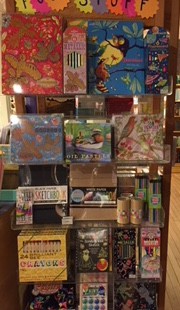 inviting to the eye. Elizabeth dons her ubiquitous elf hat (we have a longstanding joke at the store that when Elizabeth stays late to rearrange sections, she’s “elfing”) and can make just about anything look good and suddenly people are buying whatever she’s put out.
inviting to the eye. Elizabeth dons her ubiquitous elf hat (we have a longstanding joke at the store that when Elizabeth stays late to rearrange sections, she’s “elfing”) and can make just about anything look good and suddenly people are buying whatever she’s put out.
I texted her a photo of what had come in. Partly to tease her but also partly for guidance. I was utterly overwhelmed. These boxes are all writing implements or sketchbooks. That felt like a lot to me. I was getting confused about how to group them and where they should go. Elizabeth came in at two for her shift and we all had a good laugh. Then later that day and well into the evening (elfing is hard stuff that takes concentrated time with no customers) she texted me photos of the our new sections with handmade signs that say Spring into Creativity. And we are 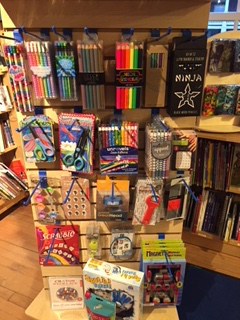 selling them! How can we not? They all look so inviting. Doesn’t everyone loves the possibility of creation, of taking a blank page and filling it with lines and shadows to make a picture? And what better way to create young artists than with easy (and very affordable) and fun supplies?
selling them! How can we not? They all look so inviting. Doesn’t everyone loves the possibility of creation, of taking a blank page and filling it with lines and shadows to make a picture? And what better way to create young artists than with easy (and very affordable) and fun supplies?
Here’s the only thing: I took one sideline meeting a month ago when Elizabeth was out sick. What did I order? Pencils!
An Unexpected Wrangle with the Easter Bunny
Elizabeth Bluemle - March 20, 2015
 We’ve always been surprised by how good business is around Easter. You’d think Valentine’s Day would be the stronger bookselling holiday, but the Easter Bunny brings better sales than St. Valentine and St. Patrick put together. Some of it is likely due to the optimism New Englanders feel in springtime; those newly sunny, springy days bring out happy shoppers. And some of it may be due to parents, these healthy Vermonters, wanting to pop something in their kids’ Easter baskets that doesn’t contain sugar.
We’ve always been surprised by how good business is around Easter. You’d think Valentine’s Day would be the stronger bookselling holiday, but the Easter Bunny brings better sales than St. Valentine and St. Patrick put together. Some of it is likely due to the optimism New Englanders feel in springtime; those newly sunny, springy days bring out happy shoppers. And some of it may be due to parents, these healthy Vermonters, wanting to pop something in their kids’ Easter baskets that doesn’t contain sugar.
For 18 years, we’ve had ads or a signboard for the store that says, Fill Their Baskets with Books. When there’s time, those words on the signboard are nestled in a festive drawing of a basket with eggs and a couple of books. When there isn’t, just the words suffice.
In the past, my concerns about the sign were only about whether it might be too Christian. After all, of course, many families don’t celebrate Easter Sunday. And even though the Easter Bunny is as far removed symbolically from the religious Easter story in the national imagination as candy canes are from the traditional Christmas story, it is still a Christian holiday. Occasionally, we’ve chosen a signboard that mentions both Easter and Passover, but Passover isn’t a gift-giving holiday like Hanukkah is, and we have never sold many Passover books beyond family Haggadahs and a few picture and board books, so it hasn’t been too worrisome to highlight Easter as a holiday with a big place for books.
So I was surprised when one of our staff members mentioned her discomfort with our sign because it might tip off kids old enough to read to the fact that parents, um, help out the Easter Bunny. As a kid who clung to a belief in Santa for a long time, I am sympathetic to the charms of childhood magic and am happy to uphold and protect children’s delight and belief in that magic. The current signboard has no images and doesn’t mention Easter at all; the words “fill their baskets with books” could simply mean, “fill their shopping baskets with books,” but its proximity to Easter is definitely suspect. On the other hand, it seems pretty easy to come up with explanations that don’t shatter the story. Perhaps the Easter Bunny solicits parental help for the non-egg, non-candy portions of Easter gifting, especially since it doesn’t know a child’s reading interests. Unlike Santa, who has armies of elves gathering intel, the Easter Bunny hops alone.
Yesterday, our bookseller who is uncomfortable with the sign received a phone call from a customer, a lovely person whose family shops often at the store and prefaced her concerns with the sign by saying how much they love our store. The customer’s daughter is nine, and though the child hasn’t seen our signboard yet, her mom is worried that she would read it driving by the store and begin to doubt. “It’s not a nice sign,” said our bookseller to us privately, and that gave me serious pause. Is it really not a nice sign? Aren’t there so many ads about Easter on TV, and so many displays in markets and drugstores that would send an even less subtle message about who is responsible for the goodies that show up on lawns and in houses across the country? Is our little sign really likely to be the big spoiler? I suppose that doesn’t really matter. I’m not responsible for the choices other advertisers make, but I am responsible for my own.
Perhaps personal bias makes me less sensitive about the Easter issue. I loved Easter as a kid — the hard fist-sized sugar eggs you could peer into, with miniature scenes inside! the malted milk robin’s eggs with their pale, pretty speckles; the Peeps, which I preferred slightly stale and chewy; the bright oblong candy eggs that held a center of spun fluffy sugar; the sugar sugar sugar! and the messy happy egg-dyeing. I clearly remember the eerie magic of going to my grandmother’s little house in Phoenix and searching for the baskets the Easter Bunny had hidden there — always behind the bedroom doors — for my sister and me. But frankly, the Easter Bunny didn’t rate like Santa. I was not strongly attached to the notion of the giant bunny and didn’t feel it had any particular interest in me as a person, unlike the jolly red-suited grandfather-type who invited a letter filled with my hopes and dreams once a year. And so perhaps I am not as attuned to sensitivities around this holiday.
Maybe we do need to rethink our signboard. Perhaps for many children, Easter Bunny magic might be overturned by the suggestion that parents help out with some of the goodies. It’s hard to let go of the sign altogether, though. Since books are such welcome additions to Easter baskets, but not necessarily intuitive ones, we have always felt that a little suggestion brings in a lot of business. But is it worth alienating families? I don’t want to contribute to less magic in the world. One of the great joys of bookselling — of being human — is bringing delight and surprise to the lives of little people.
I suspect there’s a better tag line out there that might serve the purpose with less risk of spoiling the surprise — and I know which bookseller I’m going to ask to write it.
Booksellers and Computers
Kenny Brechner - March 19, 2015
I’ve known from the beginning that some people who possess core attributes of bookselling, love of books and the ability to express that love, who have good people and customer service skills, view machines as magical realms. In some environments this can be a charming and personable quality. In a  contemporary bookstore this kind of magical thinking can be a danger to both to the store and the sanity of its owner.
contemporary bookstore this kind of magical thinking can be a danger to both to the store and the sanity of its owner.
This is particularly true, I think, in smaller stores where the ability to compartmentalize tasks is much more limited. In the early ’90s the only thing for most of my booksellers to be terrified of was the cash register, or possibly blowing a bulb on the microfiche reader by putting in the wrong slide. Oh, wait, that’s a subject slide, not an author slide…Kapow. Over the years the computerization of tasks has grown to the point where it is not possible to shield a bookseller from a fairly immersive experience in said machines.
I’ve thought about testing for magical thinking of this sort. Something along these lines.
Touching which of the following keyboard keys will cause the computer to be violently destroyed?
□ The End (of everything) key
□ The Pause- Break (everything) key
□ The F5 key (in the morning) and the F9 key (in the afternoon).
□ All of the above
The computer with the networked printer on it is plugged into a big black thing that keeps the computer running for a little while after a power outage. One day, when you try and print something, just as soon as the printer wakes up from sleep, the computer attached to it, its monitor, and the printer itself immediately shut down and the black box thing on the floor starts wailing like an enraged banshee. What you should do is…
□ Reboot the machine and then try it again.
□ Reboot the machine and then, since a printer virus is clearly at work, try to print from every machine to see if they are all affected.
□ Replicate the sudden shutdown as many times as possible to see if the anti-virus program will wake up and slay the virus.
□ Unplug that computer from the black thing and plug it into a regular power strip.
The truth is that in 2015 we want booksellers to be nearly ideal beings: wonderful with books, customers, and computers. Customers have access to immense amounts of information themselves. The ability to search databases and operate point-of-sale systems efficiently is hugely important. Magical thinking is important too, wonderfully important. Oh wait. hold that thought, My phone is going off. There is a computer crisis at the store.
Literary YA Enchanters: Laura Ruby and Her Kin
Elizabeth Bluemle - March 17, 2015
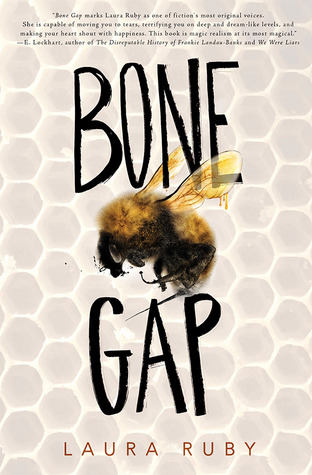
There are so many good writers for young people out there these days, writers whose strengths lie in great premises, pitch-perfect kid appeal, flawless pacing, intriguing world-building, irresistible humor, and more.
And then there are the writers who do some or all of the above, but with an extra magic. They spin their tales with fabulous language, a deft attention to cadence, tone, and atmosphere, a brilliant sense for the gaps and leaps, sparseness and richness, vividness and delicacy of narrative art. They are the writers who make other writers remember why they love writing.
I just finished reading Laura Ruby’s Bone Gap (HarperTeen/Balzer + Bray) and it created a kind of haunting mysterious gorgeousness that comes along once in a while and thrills a reader like me to the — well, to the bones.
I won’t say much about Bone Gap‘s plot except to say that it involves two brothers, fractured lives, a tiny, overly interconnected town, strangers both beautiful and monstrous, violence under a veneer of creepy blandness, and ominous corn. I couldn’t set this book down.
It spun a web around me in a way that reminded me of books by a few other YA writers whose gifts with language strike me similarly. They all have styles that are unique and mesmerizing. If you want to sink into language and beauty that is simultaneously stark and lush, add Bone Gap to your reading stack along with Julie Berry’s All the Truth That’s in Me (Speak), E. Lockhart’s We Were Liars (Delacorte), and Franny Billingley’s Chime (Speak) (and her equally astonishing The Folk-Keeper (Aladdin).
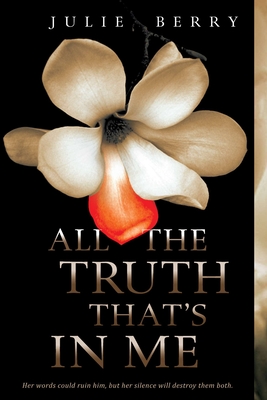
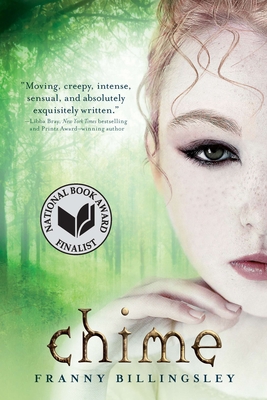

While I don’t only love gorgeously written books, I do especially love them. But I’m extra picky about prettily written books, because there’s a line where ‘poetic’ becomes ‘precious,’ and I don’t like books that feel self-consciously or self-indulgently beautiful, books with no plot, or the kind that evaporate from memory the moment I’m done reading the lovely language.
Gorgeous books, to me, are the ones that reignite a blaze of appreciation for the subtleties and possibilities of language—the things you almost forgot words can do when strung together in dazzling, unexpected ways—and admiration of the fascinating elisions and collisions that happen in the narratives of confident storytellers.
There can be a fine line between a soufflé and a mess of egg, and it’s a difference of artistry, practice, a lot of work, and maybe a little luck. All I know is, these writers have some kind of special hot-wired connection to a particularly wild and ungovernable Muse, and we are the charmed, haunted beneficiaries.
Publishers: If You Ever Wonder Why You Haven’t Been Paid by a Bookstore
Elizabeth Bluemle - March 16, 2015
Bookstores are many, many things. One of them is a morass of details. Sometimes we will hear from a vendor about a missing payment, and it’s clear the vendor is under the impression that we have actively chosen not to pay their bill. While it’s true that invoice juggling can happen with retailers (there are certainly lean cash-flow months and full cash-flow months), for us, this happens only with invoices for hundreds (or thousands) of dollars, when we are waiting to be paid by a school or library before we can cut a large check.
Compounding this issue is that small indie booksellers may not have dedicated bookkeepers; bill-paying is just one of the hats bookstore owners wear. An important hat, of course, but one among many. On top of that is the fact that some vendors (the smaller ones) often just send a single invoice instead of the additional monthly statements sent by larger vendors. In an ideal world, one invoice would be enough. We do understand that it is costly and time-intensive to send more than one bill through the mail. Except. We get a lot of bills. Here is a couple of months’ worth of invoices, statements, and credits from vendors (Josie took some home, so this is not even all of them!):
As tall as the paper invoice stack is, the email “piles” are even bigger. Floods of emails pour into the bookstore every day. We deal with hundreds of vendors; I don’t even want to calculate how many invoices and statements that adds up to over the year.
For booksellers, the vast majority of bill-paying and email reading has to happen outside of store hours. During the work day, we are on the store floor helping customers, we are receiving orders and stocking the shelves and calling customers to let them know their books have arrived, we are answering phones and tracking down obscure requests and missing shipments, we are meeting with sales reps to order seasons of new books and sidelines, we are processing returns and damages, we are reorganizing sections and reshelving books customers have looked at, changing displays, and planning events.
So in case you’re a publisher or a sidelines vendor or an individual author waiting to be paid by a bookstore, this might give you a window into why your check hasn’t arrived just yet. We’re good for it, just running to catch up.
The Delight of Discovery
Josie Leavitt - March 13, 2015
It’s not often that changing sections of the bookstore actually occurs to me. Usually, this is Elizabeth’s area of expertise. I often joke that if it were left to me, we’d have exactly the same set-up we had the day we opened. The other day I had a moment of inspiration about graphic novels. I must confess, that this year is the first year I’ve really gotten into graphic novels. Why I’ve resisted them for so long is beyond – they’re wonderful, but that’s another blog post. Graphic novels had been in a spinner case towards the back of the store where we have the fantasy, sports, action adventure and young adult sections.
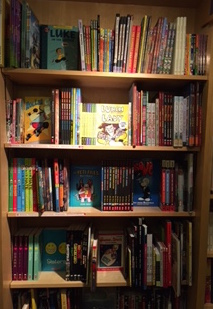 I got this idea looking at a case of books and thinking, “Hmm, I haven’t sold any of these in a while.” Graphic novels have been selling well, but people are always asking if we have them, which tells me they’re not seeing them. So I did an even swap for the action adventure books and the graphic novels. And everything fit in their respective new sections. There is nothing more frustrating than swapping out a section only to realize that I’ve misjudged and there isn’t enough room and then I have to re-shelve everything back where I started.
I got this idea looking at a case of books and thinking, “Hmm, I haven’t sold any of these in a while.” Graphic novels have been selling well, but people are always asking if we have them, which tells me they’re not seeing them. So I did an even swap for the action adventure books and the graphic novels. And everything fit in their respective new sections. There is nothing more frustrating than swapping out a section only to realize that I’ve misjudged and there isn’t enough room and then I have to re-shelve everything back where I started.
I liked how things looked. Putting graphic novels in the same area as fantasy seemed like a good fit. The thing with organizing a bookstore is working hard to have similar sections next to each other so that serendipitous browsing can happen. The delight of discovery should be a goal of every store. My thinking behind this shift will hopefully bear itself out. Just as graphic novels seemed to have a solid home, I felt equally strongly about the action adventure books. Kids who like the Alex Rider or the young James Bond series might also enjoy a rousing sports book. Again, put similar books where like-minded readers are likely to find them. This also works for people shopping for these kids. They might see a graphic novel on their way to get another book and think, “Maybe I should try that for my daughter.” The real beauty of the switch is having enough shelf space to face out more titles, which also translates to more sales.
I will check back in a month and let everyone how this switch has been in terms of increased (hopefully) sales and customer feedback. If your store has moved a section and it really worked, please share your success story in the comments. I’m always curious.

